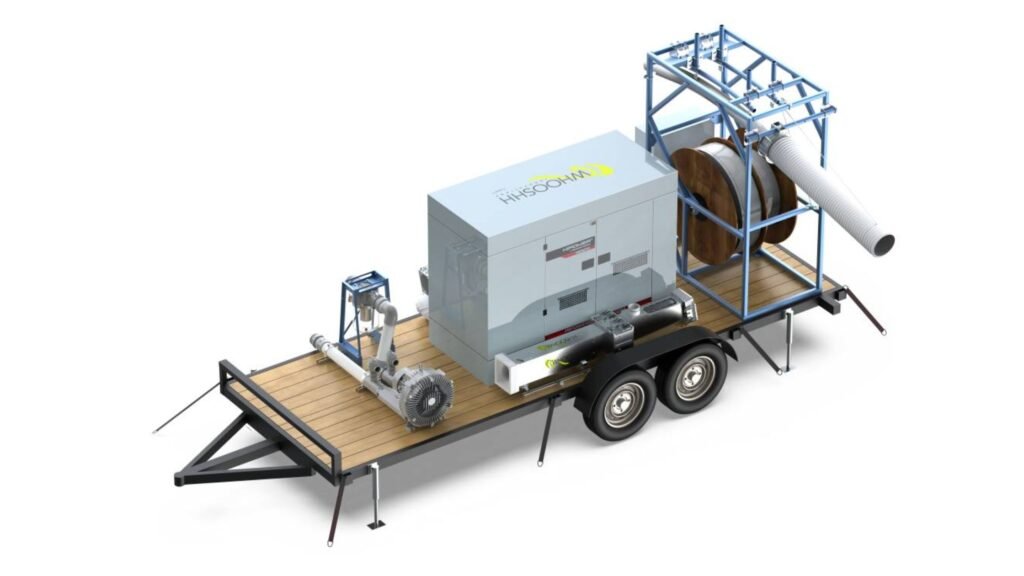
Few situations are more stressful in the aquatic world than suddenly facing the unexpected: a chemical spill, equipment breakdown, or falling river levels that put valuable fish stocks at immediate risk. For hatchery managers, conservationists, or hydropower operators, the race to mobilize comes down to one question, can we move these fish safely and fast, and what tools will give us the best chance? The pressing reality is that the difference between survival and loss often hinges on how prepared a team is to deploy a reliable emergency fish transport solution.
Fast Response without Compromise
Until recently, most emergency plans leaned heavily on manual netting, portable tanks, and frantic all-hands efforts, yet none of these truly address the twin problems of speed and fish welfare. That’s why operators are now favoring options designed with gentle, rapid transport at their core. Right in the middle of those rare, high-stress moments, deploying an emergency fish transport solution can mean relocating fish within hours, not days, and doing so without causing harm. Unlike traditional methods, next-generation systems like Whooshh Innovations’ TUber™ use pneumatic tubes and gentle misting, greatly reducing fish stress and mortality risk. As one operations lead put it, “If you want to see what panic looks like, empty a rearing pond with just nets. Now, picture deploying portable tubes, letting fish swim in, and having them emerge safely dozens of yards away minutes later. That changes everything.”
Innovation Meets Urgency
The future of fish rescue is looking a little more high-tech and a lot more manageable. Leading-edge systems are modular, portable, and designed to operate in diverse, unpredictable settings. The core premise is to minimize manual handling, which is where most fish injuries occur. Pneumatic tube transport, now proven through several field studies, creates a moist environment that gently accelerates fish from point A to B with minimal time above water. The adaptability to different species, site layouts, and crew sizes means that even small teams can act decisively when disaster strikes.
Given that most ponds, raceways, or blocked rivers aren’t conveniently located near roads or prepared holding tanks, having a setup that can be moved and assembled quickly is critical. In recent emergency deployments, systems weighing less than a pickup load have been installed and operational in under an hour, providing crucial flexibility for unpredictable conditions.
What About Fish Welfare?
Any major fish transfer comes with its own set of risks. Fish are sensitive to changes in temperature, water chemistry, and handling, all of which can cause shock or post-transfer mortality. The big question remains: is it possible to achieve both speed and safety? With contemporary tube-based systems, the answer is increasingly yes. Designing for minimal handling, using cooling and moisture-retaining materials, and moving fish in single-file rather than in large, swirling clumps all contribute to low stress and high survival rates. Studies have found survival rates above 95% using Whooshh TUber™ technology in both hatchery and field conditions.
A fisheries biologist notes, “For the first time, I feel like our fish transfer protocol isn’t a gamble. We get the speed we need in emergencies, but the welfare metrics stay high.”
The Real-World Payoff
Field stories are increasingly supporting the case for agile solutions. One recent event saw a tribal hatchery save a year’s worth of smolts in a single afternoon by deploying a portable, self-contained tube system. The fish arrived at their temporary holding site with noticeably lower mortality than previous emergency responses. Because the system also allowed for easy cleaning and real-time monitoring, the chance of disease spread or injury was drastically reduced.
Perhaps the most compelling feedback comes from managers who experience relief after a crisis: “It used to be all hands, buckets, and hope. Now, with scientific tools at hand, we leave less to chance and a lot more fish alive.”
The Bottom Line: Preparedness with a New Edge
Unexpected emergencies are, by nature, hard to plan for. Yet, as technology progresses, the toolkit for aquatic managers is getting sharper, and faster. Whooshh Innovations and similar companies are giving teams the power to stage a true “rescue response,” not just a scramble. Where traditional reactive moves left fish welfare a secondary priority, today’s portable pneumatic solutions strike the balance between rapid response and gentle handling, changing the script for fish rescue everywhere.
For end users, investing in readiness is not about “if” but “when.” The peace of mind that comes from having a reliable, proven emergency fish transport solution ready for deployment is priceless. In a world where every rescued fish counts for biodiversity, business, and reputation, who wouldn’t want that edge?